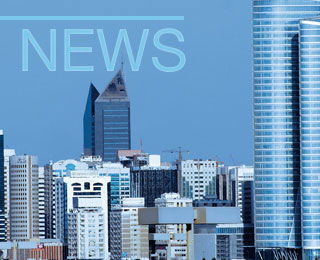On the previously announced 6.3% increase in turnover 5.7% to €7,220m for the first half, Lafarge’s EBITDA for the period fell by 3.7% to €1,291m. The trading profit declined by 7.3%, or by 9.3% on an underlying basis, to €837m, while an 8.9% drop in net interest payments to €214m was largely offset by a drop in the contribution from associates, leaving the running profit 10.5% lower at €623m. The decline in profitability primarily came from Germany with a €31m decline, principally in roofing, and from Brazil, Malaysia and South Korea, where the profit drop totalled €58m, with pressure on cement prices being the principal factor. Without this €89m deterioration, the trading profit would have improved by 7.3%.
The trading profit from the cement operations declined by 2.7% to €652m, which represents a 4.7% fall on constant parameters and exchange rates, an a turnover 6.1% higher at €3,421m. The trading profit from the European cement operations declined by 8.8% to €301m on a turnover ahead by 2.9% to €1,349m. On the positive side, profits improved in France, German losses were reduced and Serbia returned to profit, but profitability was hit by lower volumes in Britain, Greece and Poland, and by the inability to fully recover higher costs in Romania and in Russia.
North American cement profits rose by some 28% in local currency to reach €81m, on a turnover 12.7% higher at €735m. Pricing was strong and the margin improvement came in spite of higher energy costs and an increased portion of imports into the strong markets in the south-eastern parts of the United States. The Latin American and Caribbean operations saw the trading profit decline by 15.3% to €61m, in spite of an initial contribution from Cementos Selva Alegre in Ecuador, and at the underlying level the drop was some 26%. The severe pricing pressure in Brazil led to a 66% fall in the trading profit there.
The emerging Mediterranean markets raised their trading profit contribution by 14.3% to €80m on a turnover 9.4% higher at €2352m. The strongest profit growth came from Turkey and Jordan, where both volumes and prices moved ahead. A more modest improvement was seen in Egypt, where higher prices more than offset the higher fuel costs, but there was a slight profit reduction in Morocco, where volumes were a little lower.
Africa and the Indian Ocean posted a 47.2% increase in the trading profit to €106m on a turnover 19.6% higher at €592m. Cement prices rose ahead of costs in Nigeria on broadly stable volume and volumes rose strongly in Kenya, Uganda and South Africa.
In the Asia-Pacific region, severe price competition in South Korea and Malaysia led to losses being incurred to both countries, as a result of which the regional trading profit dropped by 64.1% to €23m. Malaysian cement prices have since improved and better prices in the Philippines led to a better level of profitability there. The Indian profit contribution was slightly lower as the increase in volume was more than offset by the higher cost of coal.
The concrete and aggregates division increased trading profit 9.1%, or by 4.9% on a comparative basis, to €108m on a turnover 10.9% higher at €2,337m. Acquisitions were made in the period in France, Switzerland, Greece and the Ukraine. Profitability improved in France, Great Britain and Poland, but declined in Romania. The traditional first half trading loss in North America widened from €1m to €3m, while in emerging markets, there was an improvement in South Africa but a deterioration in Brazil.
The gypsum division increased trading profit by 6.8% to €79m on a turnover 6.1% higher at €717m, with trebled profits in North America, on better prices and volumes, largely offset by the deterioration in Korea and Australia. The roofing business continues to disappoint with the trading profit dropping by 64.2% to €24m; Germany went from a €21m profit to a €10m loss and other western European markets saw profits fall by 26% to €23m.

Buzzi increases tender offer to Gulf Cement Co
After the offer document submitted on 13 March 2025 for TC Mena Holdings Ltd, a subsidiary of ...